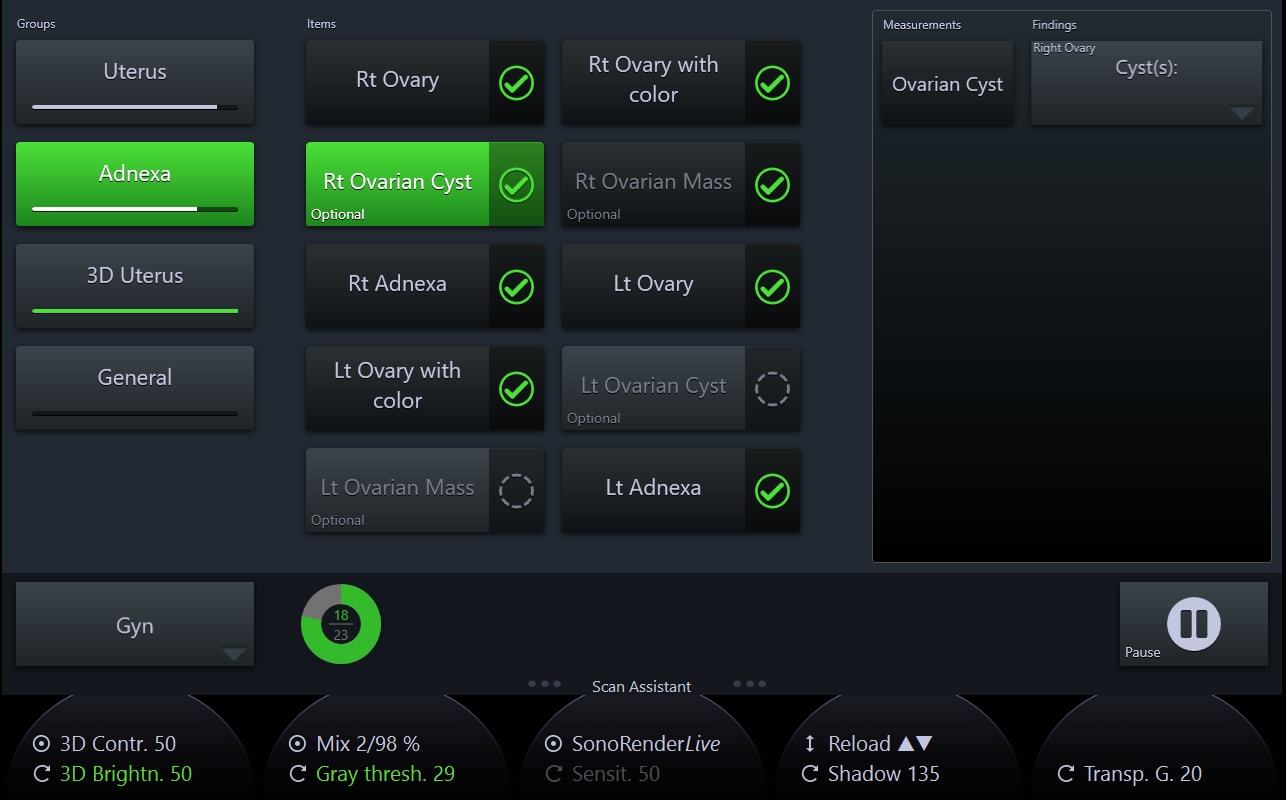If your imaging technology knew ultrasound protocol, imagine how much time it would save patients and technicians during each scan.
From the time a woman enters the exam room, a practice needs to be doing something to earn revenue. Thirty minutes of idleness costs a patient her own personal time and amounts to unreimbursed time for the practice. Every minute of the patient experience counts.
Making the most of patient visits involves ensuring that procedures are efficient but thorough and following standard of care guidelines. Adhering to the latest recommended ultrasound protocols will lead to more complete and timely reimbursements and enable physicians to provide high-quality patient care.
Removing the Guesswork From Following Ultrasound Protocols and Guidelines
Organizations such as the American Institute of Ultrasound in Medicine (AIUM) bring together experts to research best practices and inform and ultimately improve patient care. The association's practice parameters aim to promote the responsible use of ultrasound in medicine and set a "minimum criteria for a complete examination."
To remain profitable, a practice must set and follow standard ultrasound protocols. However, protocols that are not technology-driven are subject to human error. An easy way to take any guesswork out of ultrasound procedures is to program the protocols and required scans into the system. Programs such as Scan Assistant guide the sonographer through the entire exam, making sure that each view is performed, measured and documented appropriately. The program provides an automated exam script sequence that directs the user through each evaluation one step at a time.
For example, when examining the uterus with ultrasound, the AIUM practice parameters recommend the following evaluations:
- The uterine size, shape and orientation;
- The endometrium;
- The myometrium; and
- The cervix.
Scan Assistant will guide the user through these views, initiating required measurements, filling in comments when necessary, activating color Doppler when appropriate and ensuring that all views are captured.

Scan Assistant

Scan Assistant 2
The patient may need additional scans if the exam reveals any findings that need to be further investigated. However, thanks to the built-in task automation, there is virtually no likelihood that any measurements will be missed or that the patient will need to return to the office for an additional scan. The program reduces the number of required keystrokes or other user actions by as much as 79 percent, and cuts the time it takes to produce some scans nearly in half.
Reducing Down Times and Boosting Quality of Care
A change in ultrasound guidelines can temporarily decrease productivity as physicians and technologists adjust to the new standards and integrate them into practice. But technology-driven solutions can reduce these down times to the time it takes to program in the new guidelines. Quality assurance requires practitioners to follow protocols precisely, and an ultrasound system that always knows the next step is an excellent productivity tool to achieve these benchmarks.



